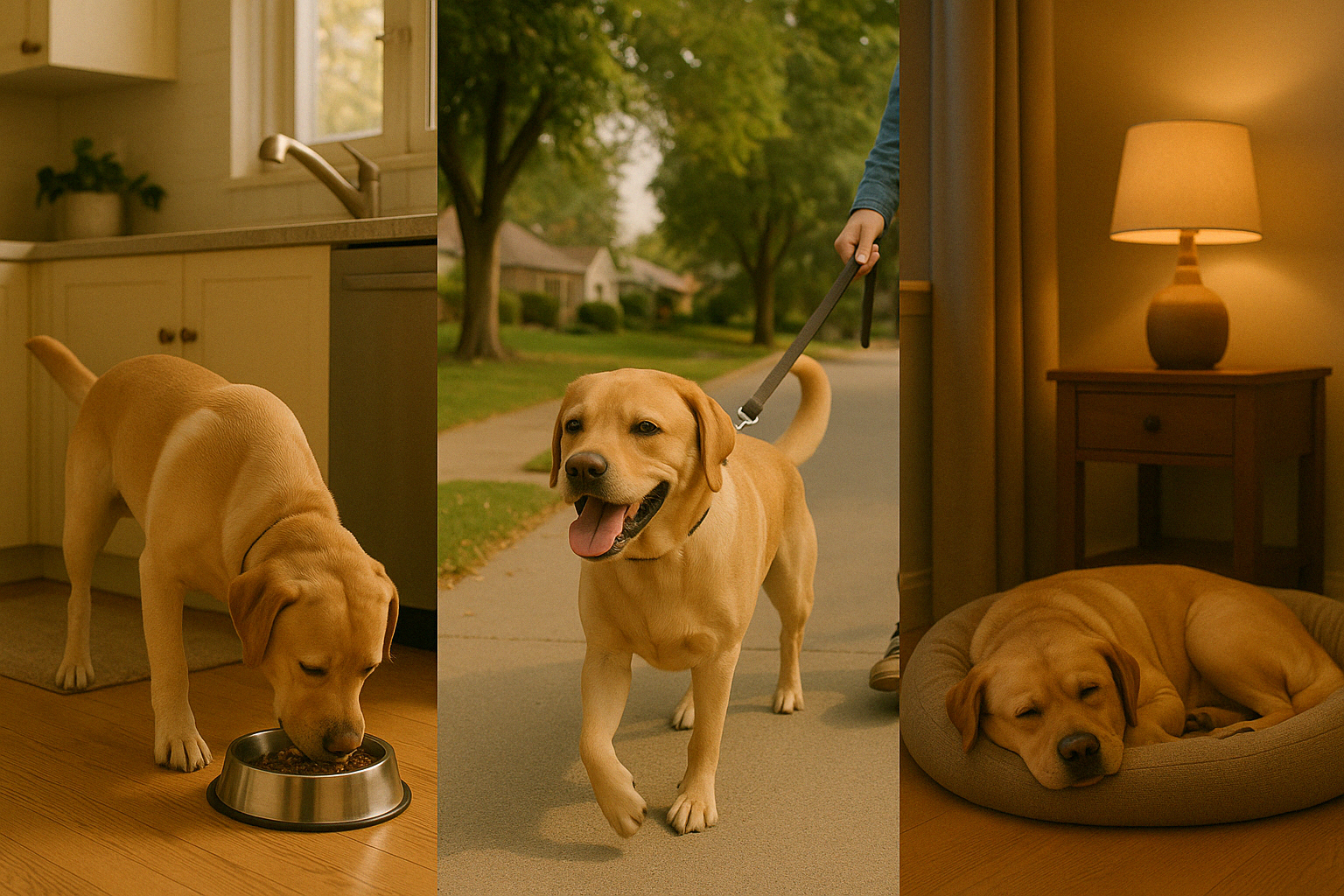Dogs are creatures of habit — they thrive on structure, predictability, and knowing what to expect from their day. A daily routine helps reduce stress, improve behavior, and strengthen the bond between you and your pup.
Whether you just adopted a new dog or want to improve your current schedule, this guide will show you how to build a healthy, consistent routine your dog can count on.
Why Routine Matters for Dogs
Having a regular daily structure benefits dogs in many ways:
- Reduces anxiety and nervous behavior
- Improves potty training and indoor manners
- Supports healthy sleep and digestion
- Helps with obedience training and attention
- Builds trust and emotional security
Just like humans, dogs feel better when their world feels stable.
Sample Daily Dog Routine
Here’s a basic structure you can adapt to your dog’s age, breed, and energy level:
Morning (6:30–8:00 AM)
- Potty break as soon as your dog wakes up
- Short walk or light play to burn early energy
- Breakfast — same time every morning
- Fresh water refill
- Quick grooming if needed (brushing, paw wipe, etc.)
Tip: Consistent feeding and potty times help regulate digestion and prevent accidents.
Midday (11:00 AM–1:00 PM)
- Second potty break
- Walk or play session (especially for high-energy breeds)
- Mental stimulation (puzzle toys, training practice)
- Quiet time or rest in a designated area
If you’re away during the day, consider a dog walker or neighbor visit — especially for young or senior dogs.
Afternoon/Evening (4:00–7:00 PM)
- Another potty break and walk
- Dinner— same time each night
- More play or training time
- Social interaction or cuddle time
This is a great time for training sessions when your dog is alert but not overly energetic.
Nighttime (8:00–10:00 PM)
- Last potty break before bedtime
- Wind-down activities (chewing a toy, soft brushing, quiet companionship)
- Lights out around the same time each night
- Crate or bedtime in a consistent sleeping space
Dogs sleep better when they follow a clear nighttime routine.
How to Customize the Routine
Not every dog needs the same amount of exercise or structure. Adjust for:
- Age: Puppies need more potty breaks and playtime; seniors need more rest
- Breed: High-energy dogs (like Huskies or Border Collies) need more stimulation
- Health: Dogs with medical needs may require medication and monitoring
- Your lifestyle: Consistency matters more than exact times — stick to your rhythm
You don’t need a military-style schedule — just enough structure to build security.
Things to Include in Your Dog’s Routine
- Meals at consistent times
- Walks for exercise and mental health
- Training or enrichment (even 5–10 minutes daily)
- Playtime with toys or games
- Rest periods and quiet time
- Grooming as needed (daily brushing, paw care, etc.)
- Hydration — check water bowls often
Even short routines go a long way toward building a healthy, well-behaved dog.
Tips to Make Your Routine Stick
- Use verbal cues (like “bedtime,” “outside,” “dinner”) to help them recognize patterns
- Be consistenteven on weekends
- Involve the whole household so your dog gets the same signals from everyone
- Use a calendar or reminder app during the first weeks
- If your schedule changes, transition gradually — not all at once
Dogs are smart, and with consistency, they learn quickly.
Final Thoughts
A good routine isn’t about strict rules — it’s about predictability and peace of mind. Your dog will feel more confident, calm, and connected when they know what to expect and when.
Whether your day starts with an early walk or a cuddle on the couch, structure creates a happy life — and a better bond between you and your best friend.

